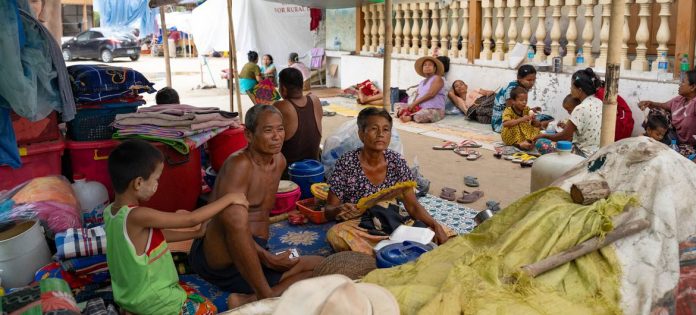One month after the devastating earthquakes struck central Myanmar, tens of thousands of survivors are still living in fragile conditions, with destitution, disease, and despair stalking their daily lives, according to United Nations agencies on the ground.
With many families still sheltering under makeshift tents of plastic sheeting, vulnerable communities are now facing pre-monsoon storms, stagnant water, and increasing risks of waterborne diseases.
Living in Fear and Hardship
Describing the grim situation, Dr. Thushara Fernando, WHO Representative in Myanmar, said:
“When it rains, they can’t sleep. When the rain stops, they still can’t sleep because they fear the wind might blow their only shelter away.”
He warned that contaminated water sources, overwhelmed toilets, and the absence of basic protection like mosquito nets are exposing survivors to cholera, dengue, and acute watery diarrhoea. A cholera outbreak had already been reported in Mandalay prior to the earthquakes.
The Humanitarian Toll
The earthquakes, which struck on 28 March 2025, killed at least 3,700 people, injured 5,100, and left 114 still missing, though actual numbers are feared to be much higher due to underreporting.
Since the initial quake, survivors have endured over 140 aftershocks, some as strong as magnitude 5.9, adding to trauma and complicating relief efforts.
WHO and UNICEF Response Efforts
To meet the urgent needs:
- WHO has delivered around 170 tonnes of emergency medical supplies, supporting 450,000 people for at least three months.
- More than 220 emergency medical teams have been deployed to the earthquake-affected zones.
- Dengue prevention initiatives are underway, with 4,500 rapid diagnostic kits and hundreds of insecticide-treated nets distributed.
Despite these efforts, services such as trauma care, mental health support, and maternal health services are operating at a very limited scale due to funding shortfalls.
“Without urgent, sustained funding, the risks of secondary health crises will erupt,” warned Dr. Fernando.
UNICEF also raised alarms about deteriorating conditions:
- Access to food, healthcare, and clean water remains severely disrupted.
- Early signs of acute watery diarrhoea are emerging.
- Malnutrition rates are worsening, particularly among young children.
- Low immunization coverage threatens to spark preventable disease outbreaks, particularly as monsoon rains approach.
Urgent Action Needed
As Myanmar’s earthquake survivors brace for even harsher conditions during the coming monsoon season, UN agencies are calling for immediate international support to prevent a full-scale humanitarian health disaster.
“Urgent action is needed to protect children and families already on the brink,” said Eliana Drakopoulos from UNICEF.
The situation remains critical—and without expanded funding and humanitarian access, Myanmar could soon face secondary health crises that would claim even more lives.




